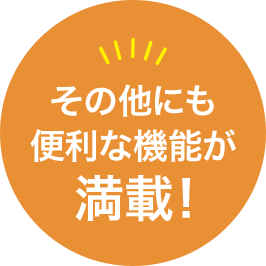| 意味 | 例文 (19件) |
町に来ましたか?の英語
追加できません
(登録数上限)
「町に来ましたか?」の部分一致の例文検索結果
該当件数 : 19件
町に来ましたか?例文帳に追加
Did you come to town? - Tatoeba例文
時々イタリア人の大道音楽家が町にやって来ました。例文帳に追加
Sometimes an Italian street musician came to town.発音を聞く - Tanaka Corpus
NY州の小さな町ブルックフィールドに サーカスがやって来ました例文帳に追加
The circus had just arrived in the tiny town of brookfield, new york. - 映画・海外ドラマ英語字幕翻訳辞書
ny州の小さな町ブルックフィールドに サーカスがやって来ました例文帳に追加
The circus had just arrived in the tiny town of brookfield, new york. - 映画・海外ドラマ英語字幕翻訳辞書
村落の子供はしばしば、丘の上に集まって、そこでトラックや自動車が町へ行ったり来たりするのを見るようになりました。例文帳に追加
The children from the village would often gather up on top of the hill and from there watched the trucks and automobiles going back and forth to the city. - Tatoeba例文
これに対応するために与力の嫡子を見習名目で職務に当たらせて給銀だけを与える事で与力の数を事実上水増ししたり、本来は町役人の元締であった町代に事務業務を委任したりするようになった。例文帳に追加
To cope with the realignments, the number of yoriki was effectively padded by assigning children of yoriki to such duties as paid trainees, and the administrative work was outsourced to Machi-dai who used to be the head of town officials.発音を聞く - Wikipedia日英京都関連文書対訳コーパス
-
履歴機能
 過去に調べた
過去に調べた
単語を確認! -
語彙力診断
 診断回数が
診断回数が
増える! -
マイ単語帳
 便利な
便利な
学習機能付き! -
マイ例文帳
 文章で
文章で
単語を理解! -

Weblio例文辞書での「町に来ましたか?」に類似した例文 |
|
町に来ましたか?
Did you come to town?
Are you going to town?―(米国では)―going down town?
I am going to town―(米国では)―going down town.
Please come to our town some day.
Please come on our town some day.
Were you awake from that?
Please don't leave town.
Please don't leave the city.
Don't leave town.
「町に来ましたか?」の部分一致の例文検索結果
該当件数 : 19件
浪江町のグループの代表,八(や)島(しま)貞(さだ)之(ゆき)さんは「私たちは震災の結果苦しんで来たが,悪いことばかりじゃない。これからも町おこしのためにしっかりやって行く。」と話した。例文帳に追加
Yashima Sadayuki, the leader of the Namie Town group, said, "We've suffered as a result of the earthquake but things are not all bad. We'll continue working hard to revitalize our town." - 浜島書店 Catch a Wave
「わたしがヨッパの町で祈っていると,我を忘れた状態になって,幻を見ました。大きな布のような入れ物が,四隅で天からつり降ろされているようでした。ついに,わたしのところにまで下りて来ました。例文帳に追加
“I was in the city of Joppa praying, and in a trance I saw a vision: a certain container descending, like it was a great sheet let down from heaven by four corners. It came as far as me.発音を聞く - 電網聖書『使徒行伝 11:5』
長崎県南高来郡(現・雲仙市)では「トオシモン」、愛媛県宇和島市では「ウショウニン」、鹿児島県日置郡市来町(現・いちき串木野市)では「ツクイモン」の名で同様の牛鬼、牛神祭が行われている。例文帳に追加
Similar Ushioni festivals or cow god festivals are also held in the following places: Minamitakaki County, Nagasaki Prefecture (present-day Unzen City); Uwajima City, Ehime Prefecture; and Ichiki-cho, Hioki County, Kagoshima Prefecture (present-day Ichiki-kushikino City); under the name of 'Toshimon,' 'Ushonin,' and 'Tsukuimon' respectively.発音を聞く - Wikipedia日英京都関連文書対訳コーパス
(アナウンサー) ...高校野球東北大会の試合が 行われていた 新町野球場で― 応援に来ていた山河高校 吹奏楽部の 生徒42人と教師1人が― 腹痛や吐き気を訴え 病院に搬送されました例文帳に追加
During the northeastern high school baseball championship game, all members of the 41 piece yamakawa high school brass band and their music teacher, were hospitalized for nausea and stomach... - 映画・海外ドラマ英語字幕翻訳辞書
...高校野球東北大会の試合が 行われていた 新町野球場で― 応援に来ていた山河高校 吹奏楽部の 生徒42人と教師1人が― 腹痛や吐き気を訴え 病院に搬送されました例文帳に追加
During the northeastern high school baseball championship game, all members of the 41 piece yamakawa high school brass band and their music teacher, were hospitalized for nausea and stomach... - 映画・海外ドラマ英語字幕翻訳辞書
室町時代後期になると、小笠原氏の小笠原長清の末裔とされる小笠原頼勝は、福知山盆地の中央部に位置する「横山」と呼ばれた丘陵地に簡素な空堀と土塁だけで出来た福知山城を築きあげた。例文帳に追加
In the latter half of the Muromachi period, Yorikatsu OGASAWARA who is considered to be a scion of Nagakiyo OGASAWARA in the Ogasawara clan, built the simple Fukuchiyama-jo Castle with only an empty moat and earthworks in the hilly area called 'Yokoyama' located in the central part of Fukuchiyama Basin.発音を聞く - Wikipedia日英京都関連文書対訳コーパス
義満が幼少の頃の室町幕府は吉野朝廷との抗争が続き、さらに足利氏の内紛である観応の擾乱以来、幕政をめぐる争いが深刻さを増していた。例文帳に追加
When Yoshimitsu was young, there were constant struggles between the Muromachi Shogunate and the Yoshino Imperial Court, and moreover, since the Kanno Disturbance, an internal conflict of the ASHIKAGA family, had occurred, the strife between the Shogunate and the Court intensified.発音を聞く - Wikipedia日英京都関連文書対訳コーパス
※大阪府域局のテレビ大阪(京都支社→京都市中京区烏丸通竹屋町角)も京都市山科区の東南部と山城国のほぼ全域、丹波国および丹後国の一部地域で直接受信可能(但し、本来の放送放送区域は大阪府地域のみ)。例文帳に追加
TV Osaka programs, which is for the Osaka Prefecture area (whose Kyoto branch office is located at Karasuma-Takeya-cho-kado, Nakagyo Ward, Kyoto City), can in fact be received directly in the southeast area of Yamashina Ward, Kyoto City, in the almost entire area of former Yamashiro Province, and in some areas of former Tanba Province and former Tango Province (however, the original broadcasting area is limited to the Osaka Prefecture area).発音を聞く - Wikipedia日英京都関連文書対訳コーパス
|
| 意味 | 例文 (19件) |
町に来ましたか?のページの著作権
英和・和英辞典
情報提供元は
参加元一覧
にて確認できます。
Tatoebaのコンテンツは、特に明示されている場合を除いて、次のライセンスに従います: Creative Commons Attribution (CC-BY) 2.0 France Creative Commons Attribution (CC-BY) 2.0 France
|
ピン留めアイコンをクリックすると単語とその意味を画面の右側に残しておくことができます。 |
|
ログイン |
Weblio会員(無料)になると
|
「町に来ましたか?」のお隣キーワード |
weblioのその他のサービス
|
ログイン |
Weblio会員(無料)になると
|
